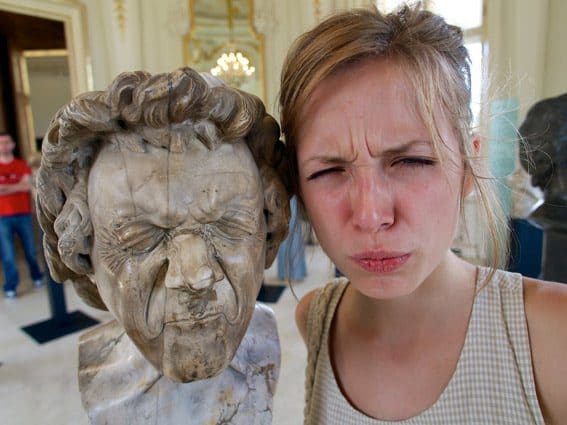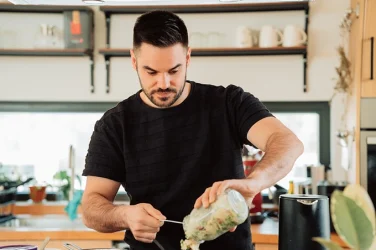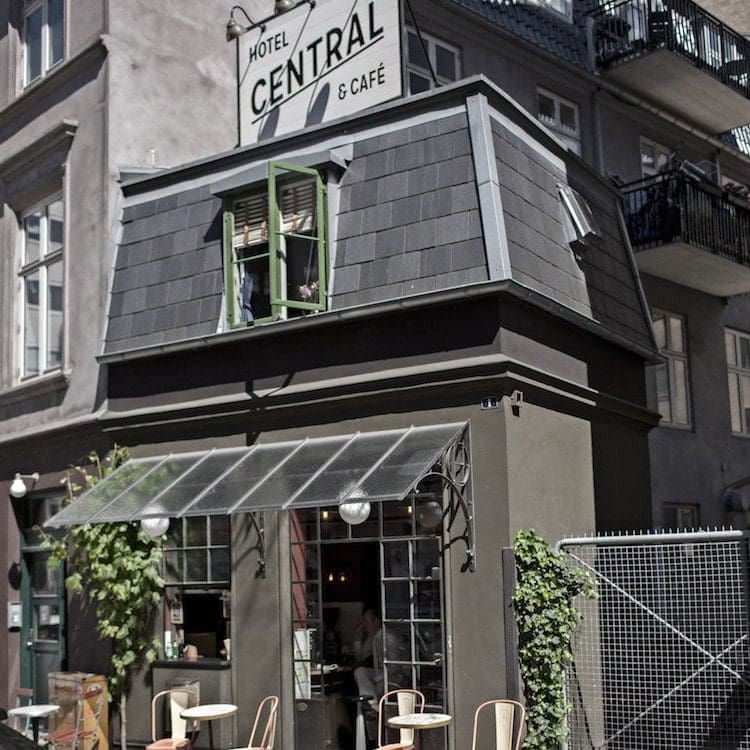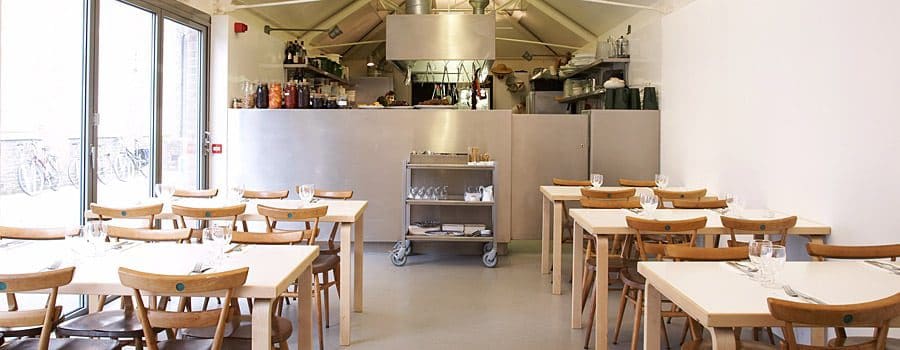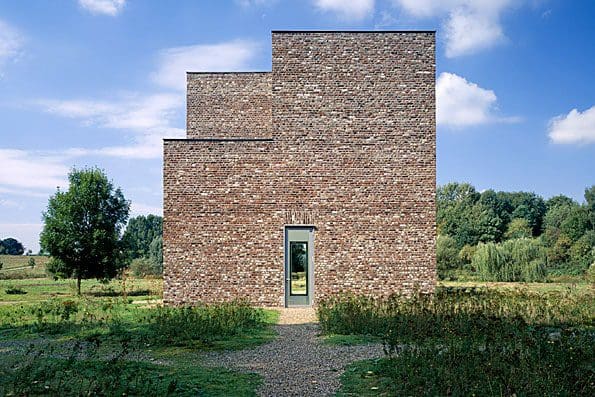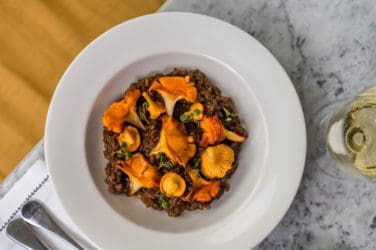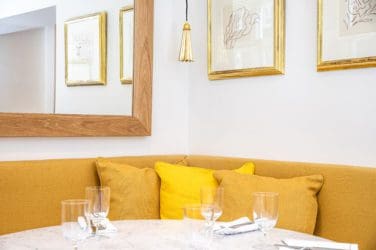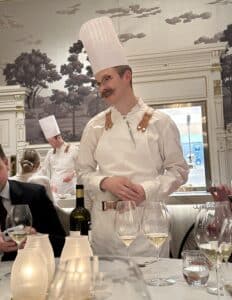
Meet the world’s happiest cows, eat the most fantastical meal of your life, and sleep on Drake’s favourite brand of mattress – and, most surprisingly of all, in Norway. It’s beyond what I expected from my ‘Golden Road’ gastronomic tour.
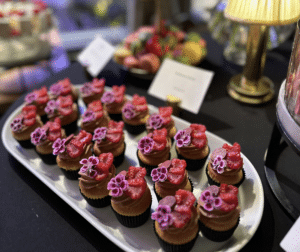
After all, when you think of Norway, it tends to be the Northern Lights, Oslo, or the Fjords. However, Up Norway, a small bespoke travel curator, are taking travellers further into the real Norway. Their ‘Golden Road’ is a trail of artisanal producers dedicated to creating handcrafted, sustainable food.
Trondheim is the natural starting point: Norway’s gastronomic capital, due to host the Bocuse d’Or Europe in 2024. The Trøndelag Food Festival and Trondheim Brewery Festival bring together the many local, organic, experimental producers, and Trondheim-Trøndelag was a European Region
of Gastronomy last year.
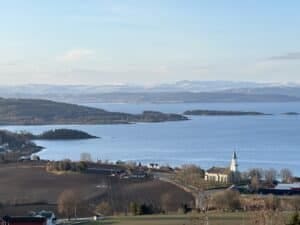
By Abi Blasi
Trondheim feels remote, but there are direct flights from Gatwick. It might be Norway’s third largest city, but with just over 200k inhabitants, so, arriving, it feels more like a large town. I wander its calm, clean streets lined by former warehouses and grandeur built out of the spoils of the historic salmon trade, the blue-filter Nordic light sharpening its cool-edged colours. The air is crisp and unpolluted. The buildings are iron-blue, oxblood red, and dove grey.
For centuries this was the Nordic Santiago de Compostela, home to the world’s northernmost medieval cathedral. Nidaros Cathedral stands in a large space in central Trondheim, erring on the Gotham side of gothic. Inside, the kaleidoscopic stained glass glows against the pencil-grey granite. It was built over the tomb of St Olav, the Viking king who converted Norway to Christianity.
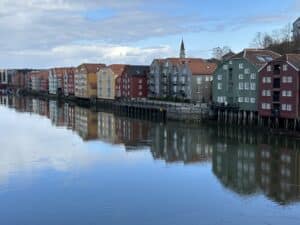
Trondheim is sliced through by the river Nidelva, and the view from Old Town Bridge supplies a perfect reflection of the red and yellow wooden houses in the looking-glass water. On the east bank is the area of Bakklandet, and I wander along its narrow cobbled streets, which are dotted by small shops selling jewellery, art and vintage upcycling, as well as small cafes turning out immaculate flat whites and pastries.
A good place to start trying more of the region’s famous gastronomy is where I’m staying. Hotel Britannia is a grand, belle epoque hotel that’s one of the Leading Hotels of the World. It is an icon of the city, a creamy palatial building with a red carpet and a top-hatted avuncular doorman. The rooms too feel classic, but with a contemporary ‘we’ve thought of everything’ comfort. Beds in all the 225 rooms are are by Swedish company Hästens, and I idly later research them, thinking that it’s the most comfortable bed I’ve ever slept in, only to find that the lowest price point online is around £20,000 (Drake has one of their Vividus range, a snip at around half a million). The perks of having a billionaire behind the hotel refurbishment: Norwegian financier Odd Reitan.
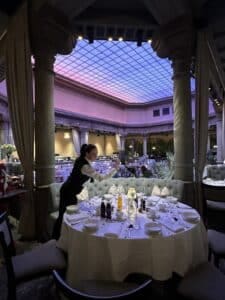
The Britannia has several great restaurants. Norway’s best petit fours, as beautiful as the flowers
that adorn them, are served in the fin de siecle, glass-roofed Palmehaven restaurant, as is breakfast, awarded Norway’s best, in the Twinings Best Breakfast Awards. Its focus is quality, with locally smoked salmon, local organic produce and complex, heavenly fruit juices from nearby producers.
The hotel’s crowning gastro-glory is the Michelin-starred showstopper, Speilsalen (the ‘Mirror Hall’), with its gold-edge cream, mirrors and murals of trees and pink-tinged skies. Here head chef Håkon Solbakk and his team, in tall chef hats, put finishing touches, delicately wielding tweezers, at the stage-like counter in front of the kitchen, with 12-16 courses. Head sommelier, Nikolai Haram Svorte ensure that each gets the wine pairing it deserves. It’s theatrical, but form never dominates the content, with each dish using little more than three ingredients. The menu is divided into three acts, with several vignettes within each, such as caviar served on a golden spoon or ceviche topped
by a lace like filigree. It’s otherworldly dining.
Part of the reason the food is so good in and around Trondheim is the profusion of small-scale local producers. Up Norway arrange a visit to Skjølberg Søndre, a rustic farm that grows food for Trondheim’s Michelin-starred, zero-waste restaurant Credo. It’s a white farmhouse with a copper-red chapel-like building set high above a valley. The rosy cheeked owners show me their greenhouse, crowded by different plants, Carl-Erik tells me how sustainability is not about growing one crop but about constant diversity. His co-farmer and wife, Elin, picking up plants and caressing them as she speaks, explains how the cooking is led by the crop.
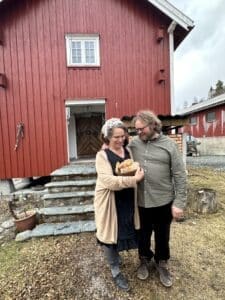
In the farm shed, there are Babe-cute pigs, and silkily coated cows, as affectionate as well-loved puppies, which nuzzle against Carl-Erik, and supply milk that is turned into butter for Credo.
We finish with a delicious stew in the grainstore-turned-dining room, which feels like a storybook, decorated with doilies and sheepskin. Elin and Carl-Erik bring me some of their home-baked cardamom buns, which they gaze at as lovingly as a new baby. It’s fresh from the oven, fragrant, soft, studded by sugar.
Next stop, Øyna Kulturlandskapshotell: a contemporary landscape hotel, 90 minutes drive from Trondheim. It looks rather like a Bond villain’s eco-lair, with plate-glass-fronted, grass-roofed rooms set into the crown of a small hill overlooking the surrounding fields and fjord. The land has been in the same family for generations, and the 18 rooms have wood-lined walls, big beds and balconies. For breakfast the produce is all local, including the bread, milk and cheese. I meet their chef, Maren Myrvold, who explains that during lockdown she planted thousands of apple trees – one of the most productive lockdowns I’ve encountered – and they now produce a range of delicious apple juices and offer tastings like wine.
I later take an e-bike down to the fjord, where the Saga Centre of Photography has a barrel sauna that Oyna have suggested. It’s right by the water, and I get as hot as I can before jumping into the tingling clear water of the fjord. It’s calm, endorphin-firing bliss, and I feel as if I stayed here longer, I could, too, feasibly end up planting an orchard or befriending some cows.
Apple juice, fine dining, sauna and fjord jumping: for a gastronomic escape, a trip with Up Norway is as wholesome as it gets.
Up Norway are luxury travel curators that tailor make trips according to individual needs, taking guests off the beaten track to explore Norwegian treasures that one would not ordinarily find complete with local experiences & access to fascinating people with stories to tell. www.upnorway.com – budget for $500 per day. Sustainability is in their DNA and they are both B Corp and Travel Life certified














